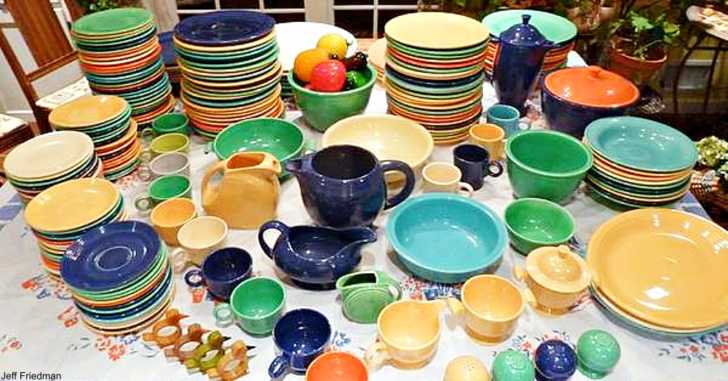
There’s nothing quite likе the classic and enduring Fiestaware dishes that we’ve loved for decades. The Art Deco brand got it’s start making fun dishes that were bright, bold, and streamlined in design. A useful and wonderful niche collectible, these dishes add pop and style to any kitchen or dining room. Find out more about one of the most long-lived line of dishes in the past 100 years.

The Fiestware line was first produced in 1936, the simple lines along the adges mixing with the bold colors in a new modern style that broke away from the overtly feminine, flowery, and often fragile dishes that had for decades preceded it. These new dishes were heavy weight and used color to add intense drama to the dinner or breakfast table. While the lone was expanded in the first few years due to soaring popularity, by the ’70s sales has become anemic. There were no Fiestware pieces produced between 1973-1985.
The origin of the line started with Fredrick Hurten Rhead, designer of the iconic dinnerware for Homer Laughlin Pottery Company. Easily one of the most well-known American potters, Rhead created a mix-n-match line of dishes that is still one of the most recognizeable of the past 100 years.

From the original light green to the modern tomato red one thing that new and old Fiestaware have in common is the flair for color that simply can’t be found in other dishware. Lead and uranium were two substances that were used in Fiestware before the passing of new chemical safety standards. But, even the FDA suggests that eating off plates that are in good condition should be ok, it’s more of a problem when the glaze has become pitted or is coming off.

Today the less-common pieces such as the relish plate sets, the first-year compartment plate, and the tiered Deco candle holders can go for much more than their place-setting counterparts. Likewise, the original yellow can often sell for higher prices than other colors due to the rarity of pieces. Most of the other pieces, even original colors, can be found for very reasonable prices. It’s always wise to buy low whenever possible and it makes those splurges for your collection a little easier to bear when you find a piece that is truly remarkable.

Always beware of the newer pieces being sold as the older ones, though! If you’re ever in doubt you can always refer back to the Homer McLaughlin color chart. You can view a chart of the colors produced by year right here.
Leave a Reply